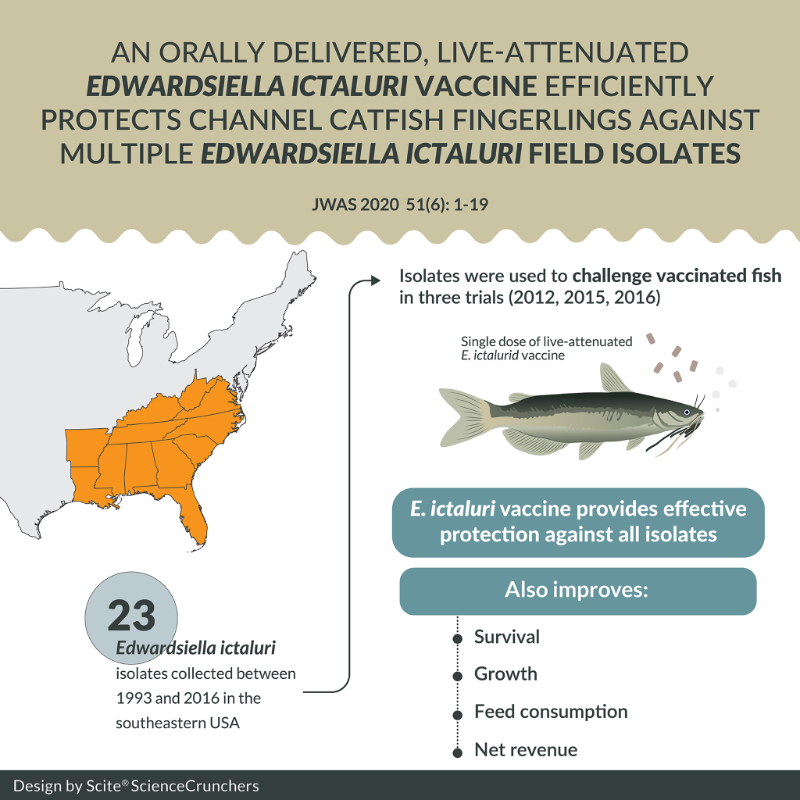The many challenges of disease management in aquaculture
Regardless of the aquatic species an aquaculture venture produces, there are significant risks to su...

The bacterium Edwardsiella ictaluri causes enteric septicemia in channel catfish and results in significant economic losses to farmers. In order to improve immunity among farmed fish, Aarattuthodiyil et al. employed a live-attenuated E. ictaluri isolate as an oral vaccine. Isolates of the bacteria archived from diverse sources over several decades were used to challenge vaccinated channel catfish, with the vaccine exhibiting high levels of efficacy against all tested strains. Though some bacterial strains differed in plasmid profiles, the majority of them had relatively low genetic diversity. Nevertheless, effective protection against all isolates by the E. ictaluri vaccine indicates that further development of multivalent vaccines are unnecessary.
Intensive biofloc systems, if optimised, have the potential to reduce resource requirements for shrimp production. Hyperintensive systems, with extremely high stocking densities, offer the advantage of viable large output shrimp production at minimal space / water requirements. In order to determine optimal stocking rates, de Silveira et al. stocked L. vannamei at densities of 500, 625 and 750 shrimp / m3 in triplicate tanks in biofloc and followed shrimp growth and water quality parameters. Results indicated the two highest stocking densities were optimal in terms of overall yield, despite animals in the highest density exhibiting significantly lower growth rates over the experimental period. The authors noted that hyperintensive stocking requires close management of key water parameters such as DO.
Cobia, Rachycentron canadum, is an exciting emerging aquaculture finfish species, however, previous studies indicate it is susceptible to stress when reared at high densities. In order to determine potential trade-offs in economic benefits of high density against stress-related reductions in growth and product quality, Silva et al. held Cobia at three densities ranging from 3.30 kg/m3, through 6.67 kg/m3 to 13.15 kg/m3. While most measures of feeding activity, condition and stress indicators did not differ between treatments, there was a significant negative effect of increased stocking density on weight gain and accordingly specific growth rate. Product quality, in this case faster rigor mortis development, was also found in fish held at high densities.
Pearl oyster, Pinctada fucata martensii, is a commercially valuable aquaculture species in the South China Sea. As losses due to disease outbreaks and poor water quality have increased, so has the need to find suitable markers to identify commercial populations and better understand their diversity, especially those used in and affected by artificial breeding. Huang et al. used multivariate analysis of oyster morphology and 25 single-nucleotide polymorphism (SNP) markers to map gene flow between Shenzhen (SZ), Hainan (HN), Zhanjiang (ZJ), and hybrid (HY) populations. Results indicate frequent gene flow between HN and HY to such a degree they can be considered the same population. The most genetically removed population is from SZ and can be considered independent. The results are of importance when selecting future broodstock and maintaining stock diversity in future.